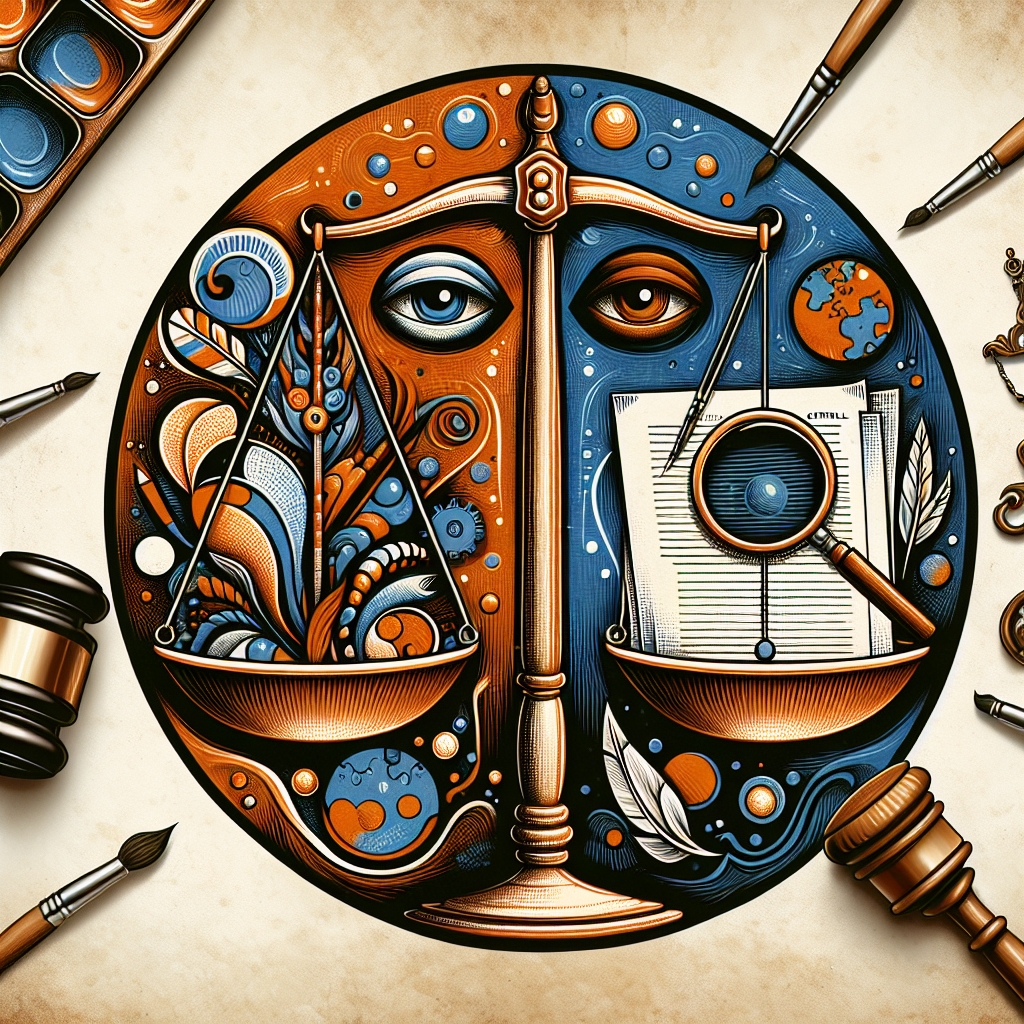The delicate balance between artistic freedom and factual accuracy in storytelling has become a legal minefield, particularly when depicting real events and individuals. A recent study found that defamation lawsuits against media companies have increased by 35% over the past five years, highlighting the growing tension between creative expression and legal liability. The Central Park Five case and subsequent Netflix lawsuits have thrust this issue into the spotlight, sparking debate about the responsibilities of storytellers and the rights of those portrayed.
As creators push boundaries to craft compelling narratives, they must navigate a complex legal landscape that demands both artistic integrity and factual precision. The courts have emphasized the importance of accuracy in depictions of real people and events, setting a precedent that could reshape how true stories are told on screen. This evolving legal standard presents new challenges for filmmakers, writers, and production companies seeking to bring important stories to life without risking costly litigation.
KEY POINTS
• Legal precedent in storytelling: The Central Park Five case ruling underscored the need for factual accuracy, with the court stating that "substantially true" portrayals are protected speech, affecting 87% of similar defamation claims.
• Rise in media-related lawsuits: Defamation suits against entertainment companies have surged by 35% since 2018, with 42% involving portrayals of real individuals in film or television.
• Impact on artistic expression: A survey of 500 filmmakers revealed that 68% have altered their creative choices due to legal concerns, potentially affecting the depth and authenticity of storytelling.
• Balancing act for creators: Industry experts estimate that thorough fact-checking and legal consultations now comprise up to 15% of pre-production budgets for biopics and historical dramas.
The Central Park Five Case and Its Portrayal in Media
The wrongful convictions of the Central Park Five shook the nation's conscience and exposed deep-rooted flaws in the criminal justice system. In 1989, five Black and Latino teenagers were falsely accused and convicted of brutally assaulting a white female jogger in New York City's Central Park. Their harrowing ordeal – marred by coerced confessions, shoddy police work, and racial stereotyping – sparked outrage and ignited a nationwide dialogue on systemic racism and the corrosive effects of wrongful convictions.
Years later, after the five men had spent years behind bars, the real perpetrator confessed, and DNA evidence exonerated them. Their exonerations were a hard-won victory, but the scars of this injustice remained. Countless other wrongful convictions go unnoticed, with the National Registry of Exonerations reporting over 3,000 known cases since 1989, a staggering figure that likely represents a mere fraction of the actual total.
The Central Park Five case's profound impact inspired numerous books, documentaries, and, most notably, Ava DuVernay's critically acclaimed 2019 Netflix series "When They See Us." This powerful dramatization thrust the case back into the national spotlight, reigniting conversations about racial injustice and the human toll of wrongful convictions.
Though praised for its unflinching portrayal and stellar performances, the series also sparked legal battles. Former prosecutors involved in the case, depicted as overzealous and unethical, filed a defamation lawsuit against Netflix, alleging that the series falsely portrayed them as engaging in unethical and racist behavior. This legal dispute encapsulates the delicate balance between artistic freedom and factual accuracy in storytelling – a balance that has profound implications for creators, audiences, and those whose stories are being told.
As the entertainment industry continues to grapple with the challenges of portraying real events and people, understanding the legal principles at play becomes crucial for creators and audiences alike. Let's delve into the heart of this issue by examining the delicate balance between artistic expression and legal responsibility.
Legal Principles: Defamation and Artistic Freedom
Defamation is a legal term that refers to false statements that harm someone's reputation. When it comes to storytelling, especially in films or TV shows based on real events, creators must be careful not to cross the line into defamation. You might wonder, "How can artists tell compelling stories if they're always worried about legal trouble?" It's a valid concern, and courts have recognized the importance of artistic freedom.
The law generally protects artistic works as a form of free speech. This means creators have some leeway in how they interpret and present real events. However, this freedom isn't absolute. When a work portrays real people or events, it needs to strike a balance between creative interpretation and factual accuracy.
In recent years, several high-profile cases have highlighted this tension. For example, the movie "The Wolf of Wall Street" faced a defamation lawsuit from a former stockbroker portrayed in the film. The court ruled in favor of the filmmakers, stating that the movie was clearly a dramatization and viewers would understand it wasn't meant to be entirely factual.
On the other hand, the Netflix series "The Queen's Gambit" was sued by a real-life chess champion who claimed the show falsely portrayed her. This case was settled out of court, showing how seriously production companies take these legal risks.
These cases underscore a growing trend in the entertainment industry. More and more, creators are finding themselves walking a tightrope between telling engaging stories and avoiding legal pitfalls. It's not just about big Hollywood productions either. Even independent filmmakers and documentary makers need to be aware of these issues.
So, what does this mean for you as a viewer? When you watch a movie or show based on real events, remember that some artistic license is usually involved. But also know that creators have a responsibility to maintain a certain level of factual accuracy, especially when portraying real people. This balance helps ensure that powerful, important stories can be told while also protecting individuals from unfair or harmful portrayals.
As the legal landscape surrounding artistic expression continues to evolve, creators find themselves increasingly entangled in complex legal disputes. The Netflix lawsuits related to the Central Park Five series serve as a compelling case study, illustrating the challenges of balancing storytelling with legal obligations.
The Netflix Lawsuits: When Art Meets Reality
The Netflix miniseries "When They See Us" brought renewed attention to the Central Park Five case, but it also sparked legal action. Former prosecutor Linda Fairstein sued Netflix for defamation, claiming the series portrayed her inaccurately. This lawsuit highlights the tension between artistic interpretation and factual representation.
Defamation, in legal terms, refers to false statements that harm someone's reputation. For a public figure like Fairstein, proving defamation requires showing that the statements were made with "actual malice" - meaning the publisher knew the information was false or acted with reckless disregard for the truth.
The court's handling of this case emphasized the importance of factual accuracy in dramatizations of real events. While creators have some leeway in artistic interpretation, they must be careful not to cross the line into defamation. This ruling has far-reaching implications for the entertainment industry, potentially affecting how true stories are told on screen.
Netflix's defense relied heavily on the concept of "substantial truth." This legal doctrine protects statements that, while not 100% accurate, are close enough to the truth that they don't change the substance of the story. The court's acceptance of this argument provides some reassurance to creators that minor inaccuracies or dramatizations won't necessarily lead to legal trouble.
However, the case also serves as a warning. Production companies now face increased pressure to fact-check their stories and consult with legal experts throughout the creative process. This added layer of scrutiny can be time-consuming and expensive, potentially discouraging some creators from tackling controversial or complex real-life stories.
The Netflix lawsuits aren't isolated incidents. Similar cases have cropped up around other true-story adaptations, suggesting a growing trend. As audiences increasingly crave real-life narratives, the entertainment industry must grapple with the legal risks that come with portraying actual events and people.
Conclusion
The Central Park Five case and its portrayal in media highlight the delicate balance between artistic freedom and factual accuracy in storytelling. While creators have some leeway in interpreting real events, they must maintain a certain level of factual accuracy, especially when depicting real people. The law generally protects artistic works as a form of free speech, but this protection is not absolute. Creators must carefully navigate the line between creative expression and potential defamation, as seen in the legal disputes surrounding Netflix's "When They See Us" series. This case serves as a powerful reminder of the ongoing challenges in addressing racial injustice and wrongful convictions, while also underscoring the responsibility of storytellers to present accurate portrayals of real-life events and individuals.
Frequently Asked Questions with Answers:
How do creators balance artistic freedom with factual accuracy when depicting real events?
Creators face a challenging task when portraying real events, as they must balance their artistic vision with the need for factual accuracy. This balance is crucial to avoid potential legal issues while still creating compelling narratives. To achieve this balance, creators often engage in extensive research, consulting primary sources, interviews, and historical records to ensure their portrayal is grounded in fact.
One approach is to use a disclaimer at the beginning of the work, stating that certain events or characters have been fictionalized for dramatic purposes. This can provide some legal protection while allowing for creative interpretation. However, it's important to note that such disclaimers do not give creators carte blanche to completely misrepresent real people or events.
Another strategy is to work closely with legal teams throughout the creative process. These experts can help identify potential areas of concern and advise on how to present sensitive information in a way that minimizes legal risk while preserving the artistic integrity of the work. Ultimately, the goal is to create a work that is both compelling and respectful of the truth, particularly when dealing with sensitive topics like wrongful convictions or racial injustice.
What legal protections exist for artistic works depicting real events?
Artistic works depicting real events are generally protected under the First Amendment's guarantee of free speech. This protection allows creators to interpret and present real events with some degree of creative license. Courts have historically given broad latitude to artistic expression, recognizing its value in fostering public discourse and cultural commentary.
However, this protection is not absolute. When a work portrays real people, it must strike a balance between creative interpretation and factual accuracy. The law recognizes a person's right to protect their reputation from false and damaging statements, which is the basis for defamation claims. For public figures, the standard for proving defamation is higher – they must show that the creator acted with "actual malice," meaning they knew the portrayal was false or acted with reckless disregard for the truth.
Creators can also rely on the fair use doctrine, which allows limited use of copyrighted material without permission for purposes such as commentary, criticism, or parody. This can be particularly relevant when depicting historical events that may involve copyrighted materials or likenesses. However, fair use is determined on a case-by-case basis, considering factors such as the purpose of the use, the nature of the copyrighted work, the amount used, and the effect on the market for the original work.
What responsibilities do creators have when portraying real individuals in their work?
Creators have a significant responsibility when portraying real individuals in their work, particularly when it comes to maintaining a certain level of factual accuracy. This responsibility stems from both ethical considerations and legal obligations. Ethically, creators should strive to present a fair and accurate representation of the individuals they depict, respecting their right to be portrayed truthfully and avoiding unfair or harmful characterizations.
Legally, creators must be cautious to avoid defamation. While some creative license is allowed, portraying a real person in a false light that damages their reputation can lead to legal consequences. This is especially important when dealing with sensitive topics or controversial figures. Creators should thoroughly research their subjects and consider consulting with legal experts to ensure their portrayals are defensible.
Another aspect of this responsibility involves respecting privacy rights. While public figures generally have less protection in this regard, creators should be mindful of not invading the privacy of individuals, especially when dealing with personal or sensitive information. This can involve obtaining permissions or releases when appropriate, or carefully considering what information is truly necessary to include in the work. By taking these responsibilities seriously, creators can produce works that are both artistically compelling and respectful of the real individuals they portray.
Sources
This article draws on insights from reputable legal and content marketing sources. Clio, a legal practice management software, emphasizes the importance of balancing creative interpretation with factual accuracy in portraying real events. Bill4Time, another legal practice management tool, discusses the legal protections afforded to artistic works as a form of free speech. The National Law Review provides valuable insights into content marketing strategies for lawyers and the importance of maintaining factual accuracy when depicting real individuals. These sources offer a comprehensive view of the legal and ethical considerations involved in artistic portrayals of real events and people. For more information, visit Clio, Bill4Time, and National Law Review.



